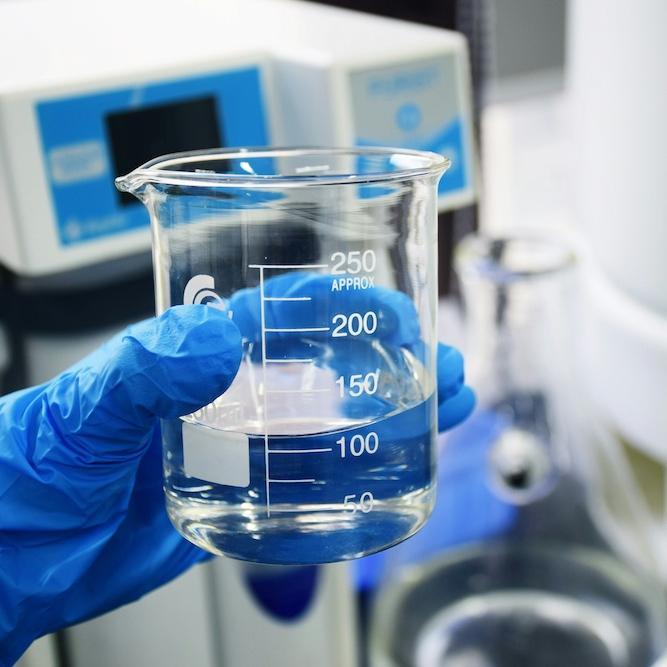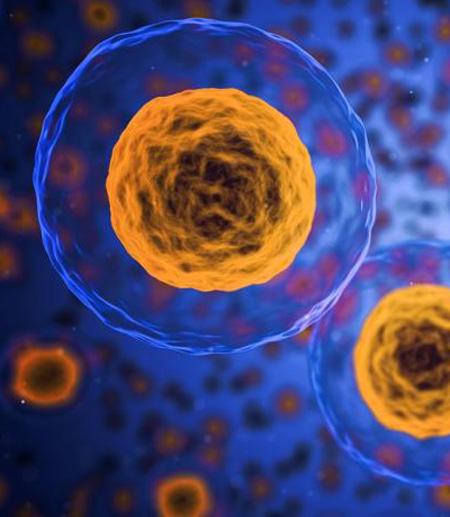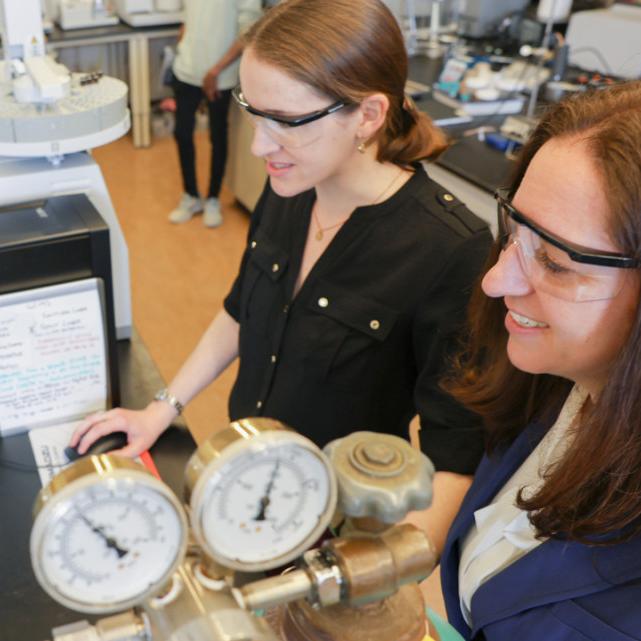To manage atmospheric carbon dioxide and convert the gas into a useful product, Cornell scientists have dusted off an archaic – now 120 years old – electrochemical equation. The group aims to thwart the consequences of global warming and climate change by applying this long-forgotten idea in a new way.
The calculation – named the Cottrell equation for chemist Frederick Gardner Cottrell, who developed it in 1903 – can help today’s researchers understand the several reactions that carbon dioxide can take when electrochemistry is applied and pulsed on a lab bench.
Their work was published March 28 in the journal ACS Catalysis.
“For carbon dioxide, the better we understand the reaction pathways, the better we can control the reaction – which is what we want in the long term,” said lead author Rileigh Casebolt DiDomenico, a doctoral student in the Smith School of Chemical and Biochemical Engineering, in Cornell Engineering under the supervision of Prof. Tobias Hanrath.
The electrochemical reduction of carbon dioxide presents an opportunity to transform the gas from an environmental liability to a feedstock for chemical products or as a medium to store renewable electricity in the form of chemical bonds, as nature does.
“If we have better control over the reaction, then we can make what we want, when we want to make it,” DiDomenico said. “The Cottrell equation is the tool that helps us to get there.”
In simple terms, the equation depicts a change in the measured electrochemical current over specific references to time during an experiment. What that means in a lab is that carbon dioxide is subjected to various applied potentials stepped up or down, or pulsed and these, in turn, generate a current that is related to the products formed from the reduction of carbon dioxide.
DiDomenico first encountered this antique equation as a doctoral student in a class taught by Héctor Abruña, the Emile M. Chamot Professor of Chemistry and Chemical Biology, in the College of Arts and Sciences, a senior author on the paper.
Intrigued after Abruña mentioned it in class, DiDomenico implemented the Cottrell equation in her own work on carbon dioxide reduction. She changed the electrochemical values (such as applied potential) or the time scale, to generate other products derived from the gas.
As an example, the equation enables a researcher to identify and control experimental parameters to take carbon dioxide and convert it into useful carbon products like ethylene, ethane or ethanol.
At first, DiDomenico thought she got strange results, but confirmed later that she had conducted the experiments correctly.
“I was trying to change the pulse profile to make ethylene specifically
by applying what I was learning in class to see if it fit,” DiDomenico said. “I realized that this was actually a way that we could identify a mechanism for reducing carbon dioxide into a useful product.”
Many researchers today use advanced computational methods to provide a detailed atomistic picture of processes at the catalyst surface, but these methods often involve several nuanced assumptions, which complicate direct comparison to experiments, said senior author Tobias Hanrath, the Marjorie L. Hart ‘50 Professor in Engineering, in the Smith School of Chemical and Biomolecular Engineering.
“The magnificence of this old equation is that there are very few assumptions,” Hanrath said. “If you put in experimental data, you get a better sense of truth. It’s an old classic. That’s the part that I thought was beautiful.”
Abruña enjoyed seeing the equation employed. “This equation describes what happens when one imposes a potential step, so you go from one voltage to another, and then look at the resulting current transient,” he said. “By analyzing the results, you can derive interesting and important mechanistic information and details. It’s just that unless you’re an electrochemical nerd like me, you probably don’t know much about that.
“People in the business of carbon dioxide reduction are much more into product distributions, or the engineering aspects of that,” Abruña said. “Here we are using a very simple model that worked amazingly well. It’s almost embarrassingly good.”
DiDomenico said: “Because it is older, the Cottrell equation has been a forgotten technique. It’s classic electrochemistry. Just bringing it back to the forefront of people’s minds has been cool. And I think this equation will help other electrochemists to study their own systems.”
For the research, “Mechanistic Insights into the Formation of CO and C2 Products in Electrochemical CO2 Reduction – The Role of Sequential Charge Transfer and Chemical Reactions,” the other co-authors are Kelsey Levine ’22 and Leila Reimanis ‘24.
The research was supported by the National Science Foundation, a Cornell Energy Systems Institute-Corning Graduate Fellowship and the Cornell Engineering Learning Initiative. Abruña and Hanrath are faculty fellows at the Cornell Atkinson Center for Sustainability.





